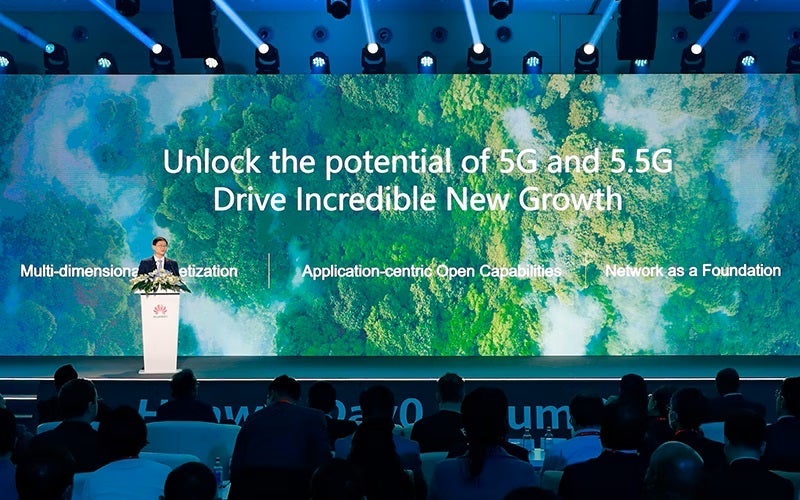
Last month saw tech players and industrial leaders descend on Barcelona for the annual Mobile World Congress 2024, to present pioneering and innovative solutions that will help carriers achieve business success.
For event sponsor and key exhibitor Huawei Technologies, MWC24 was the springboard for several connectivity-related announcements, including the launch of the world’s first 5.5G intelligent core network.

Access deeper industry intelligence
Experience unmatched clarity with a single platform that combines unique data, AI, and human expertise.
5G began commercialisation in 2019 and over the past five years has gained 1.5 billion users around the world. Currently, 20% of global mobile subscribers are using 5G and these users generate 30% of all mobile traffic and contribute to 40% of mobile service revenue.
Its successor, however, features 10 times faster uplink and downlink rates than 5G. 5.5G also embraces cutting-edge technologies such as passive IoT and native intelligence to help in the creation of new business opportunities. The new capabilities of 5.5G, including deterministic latency, precise positioning, and passive IoT, are expected to create even more opportunities in the B2B market.
According to Huawei, its new 5.5G solutions are purpose-built for the intelligent era and ideal for all industries to accelerate transformation and maximise digital productivity.
Infrastructure innovation
Key to realising the potential of 5.5G will be the creation of robust ICT infrastructure. According to Leon Wang, president of Huawei’s Data Communication Product Line, network infrastructure affects the quality of digital services across all industries. In many cases, intelligent technologies are not fully translated into digital productivity and as such, networks urgently need to be upgraded to the next generation to realise their full economic potential.
It is believed that the capabilities of 5.5G will effectively support the core production processes to significantly enhance enterprise efficiency. This is being increasingly realised across numerous industries, with rail, mining, manufacturing, oil and gas, and healthcare sectors all taking broad strides to achieve true digital transformation.
In mining, for example, many underground operations have a mining face that is longer than 100 meters. With Huawei’s 5.5G ultra-large uplink capability, over 100 HD cameras can be deployed for real-time video uploading. Meanwhile, AI technology is employed to stitch panoramic videos from fully mechanised mining faces. This 5.5G smart mine solution enables “see all, see clearly” for underground operations, significantly contributing to the health and safety of underground personnel.
In the power industry, also, Huawei used MWC24 to launch its Intelligent Distribution Solution (IDS). David Sun, vice president of Huawei and CEO of Electric Power Digitalization BU, delivered a keynote speech to launch the product which enables electric power enterprises to transition from single-point digitalisation to architecture-supported, open, evolvable, and systematic digitalisation, utilising various key technologies based on a cloud-pipe-edge-pipe-device architecture.
Laying digital foundations
According to Huawei, it is committed to continuing the curation and sharing of digital transformation methodologies with its partners, helping to enhance the digital foundations of electric power companies worldwide, speeding up intelligent development, and providing a strong option for the global market.
Naturally, the implementation of these intelligent systems increases the demand for a robust network experience. Reliable uplink speed, QoS, and latency in particular will be crucial to meet the diverse needs of industrial customers.
With a 10-fold increase in connection density and precision, the ICT sector can meet the connectivity needs of any industrial scenario, from smart grids to manufacturing, storage, and logistics. Pioneers in 5.5G such as Huawei are paving the way toward an intelligent world, aiming to bolster the digital infrastructure and accelerate the journeys toward intelligent operations for industry partners around the world.
For more information, visit e.huawei.com

